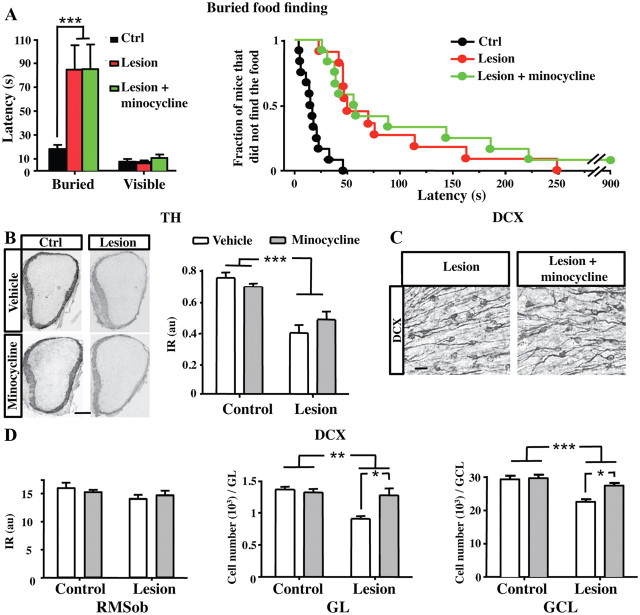Figure 7.
Minocycline restores OB neurogenesis but not sensory inputs in lesioned mice. A, Latency to find the buried or visible food in the buried food-finding test performed at 26 d (n = 11–12) after lesion. Results are mean of latency to feed in seconds (left) or fraction of mice that did not find the hidden food over 15 min (right). B, Pictures of OB coronal sections showing TH immunoreactivity in the GL of control and deafferentated mice, 1 month after lesion, in vehicle-treated and minocycline-treated mice. Quantification of TH immunoreactivity in the GL of control and deafferented mice at 1 month after lesion in vehicle-treated and minocycline-treated mice (n = 4–5). Minocycline treatment does not restore the TH expression level in the GL following deafferentation. C, DCX immunostaining in the GCL of mice at 1 month after deafferentation, with (right) and without (left) minocycline treatment. D, Quantification of DCX immunoreactivity by densitometry in the RMSob, and DCX cell number in the GL and GCL of the OB at 1 month after OE lesioning, with (gray) and without minocycline (white) treatment (n = 4–5). *p < 0.05, compared with vehicle (D); **p < 0.01, compared with control (D); ***p < 0.01, compared with control (A, B, D). Scale bars: A, 200 μm; B, 20 μm. Error bars indicate SEM.

